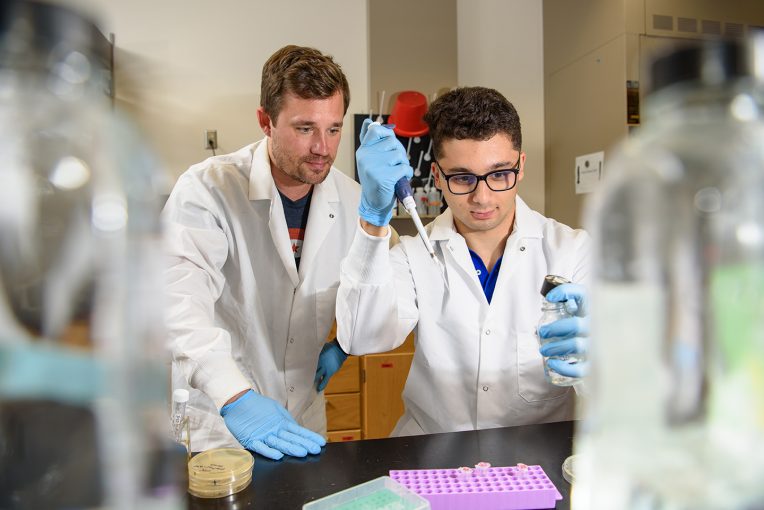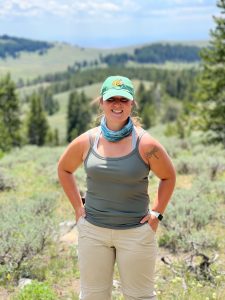Predatory beetles, bleach-resistant bacteria, billion-year-old granite, and the Paycheck Protection Program were among the research topics tackled this summer by Illinois State undergraduate students.
Twenty-one student researchers, representing four of the University’s six colleges, received FIREbird (Fund for Independent Research Experience) summer grants from the Office of Student Research. The program, which is in its third year, pays undergraduate students up to $3,000 to focus on their research throughout those less hectic months.
Appears InFor many grant recipients, this is their first real attempt at research.
“These funds provide students with the opportunity to work with a faculty mentor on a project outside of the traditional classroom experience,” said Dr. Gina Hunter, director of the Office of Student Research. “They get to share in a professional researcher’s process of discovering. They learn how to formulate significant research questions, gather and evaluate evidence, and share conclusions with other scholars. These experiences help students to clarify a career path and develop a research identity.”
The students worked each week in labs or wherever else their research took them on a project devised in cooperation with a faculty member. They also participated in professional development sessions organized by Hunter, covering research ethics, professional communication, how to create research posters, and other related subjects. The grant requires the students to share the results of their projects at the University Research Symposium, academic conferences, or in other appropriate venues.
Here is a glimpse at a few of this summer’s grant recipients:
Mehdi Bennis
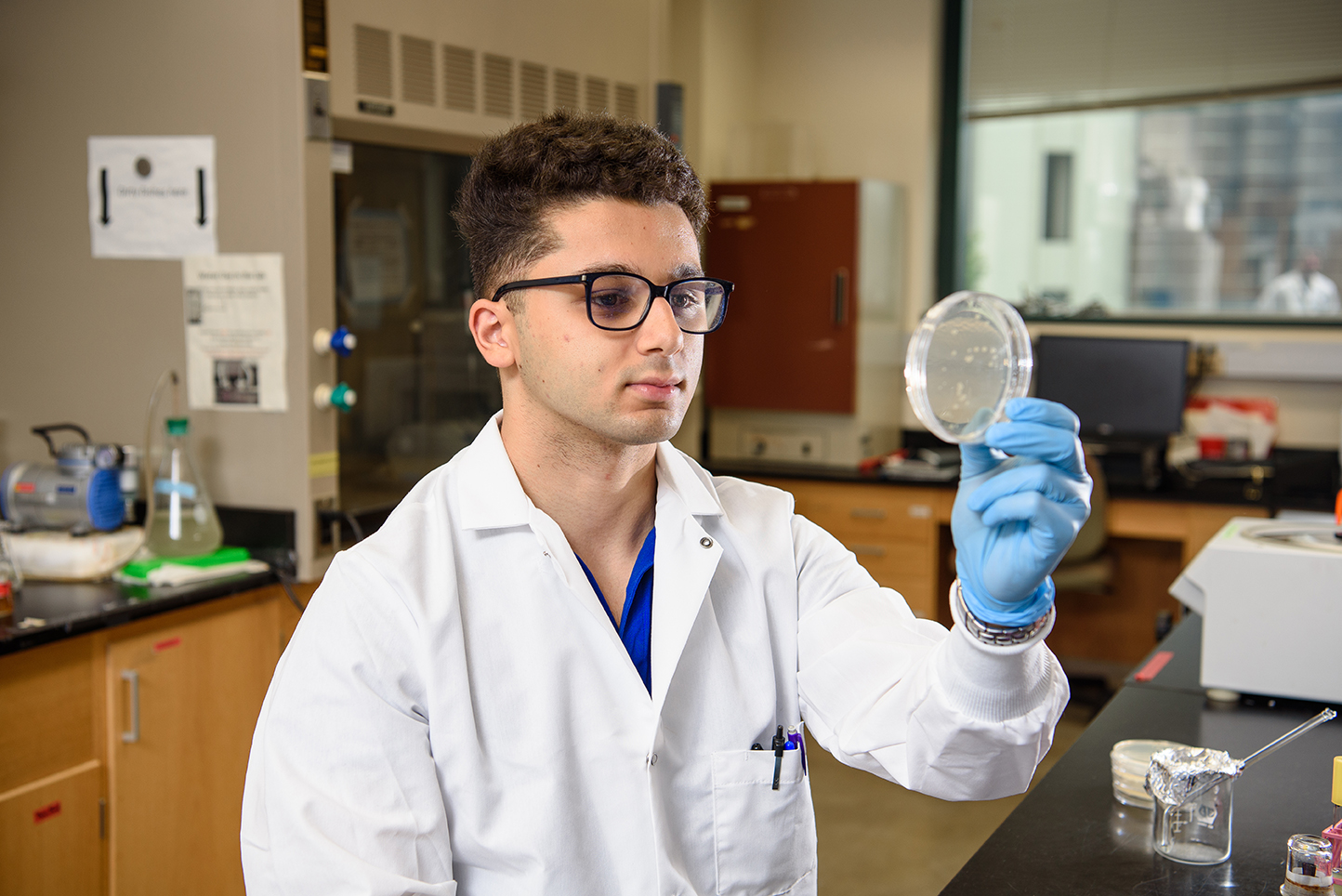
Mehdi Bennis spent his summer in the Science Laboratory Building researching a bacterial pathogen that is the leading cause of urinary tract infections (UTIs).
Bennis has been researching under Dr. Jan-Ulrik Dahl, an assistant professor of microbiology, who received a $440,000 grant from the National Institutes of Health last year to further his lab’s research into uropathogenic Escherichia coli and their interaction with the host. His lab had discovered that the pathogen is significantly more resistant to humans’ natural defense mechanisms than E. coli in the intestines.
“Uropathogenic E. coli is responsible for 70% of UTIs,” said Bennis, a sophomore molecular and cellular biology major from Casablanca, Morocco. “The main problem of this pathogen is its tendency to return and cause recurrent infections, likely due to inefficient treatments. If we better understand how this bug escapes the innate immune defense, we will likely be in a better place to develop strategies that allow us to fight off this pathogen without the need of antibiotics.”
Bennis explained that the body uses immune cells called neutrophils to produce antimicrobial compounds, including hypochlorous acid, the active ingredient in bleach. Uropathogenic E. coli is highly resistant to the bleach, which the lab recently published about in the journal MBIo.
“What we noticed is this resistance is mediated by a gene product named RcrB; however, its function is completely unknown,” Bennis said. “Our goal is now to study the functional role of RcrB that makes that resistance happen. One of our hypotheses is that RcrB protects the pathogen from hypochlorous acid stress. Over the summer, I tested whether the presence of this defense system affects DNA and/or membrane damage.”
Bennis has been conducting experiments under the supervision of Sadia Sultana, a doctoral student in Biological Sciences.
“We treated the bacteria with low doses of bleach and extracted the DNA,” Bennis said. “Then we run the extracted DNA on a gel to see the extent of the damage that happened.”
Bennis will continue to work on the research into the fall semester and present his findings at the University Research Symposium. He also hopes to share his research at regional microbiological conferences and in a journal publication.
Bennis said the research project fits well with his plans to pursue a medical degree after graduation.
“Research allows us to see how things we study in the classroom apply to real life,” Bennis said. “For example, how antibiotics work, how antibiotic resistance forms, how you extract DNA—all of the procedural stuff that can build your career as a scientist.”
Jake Brasen
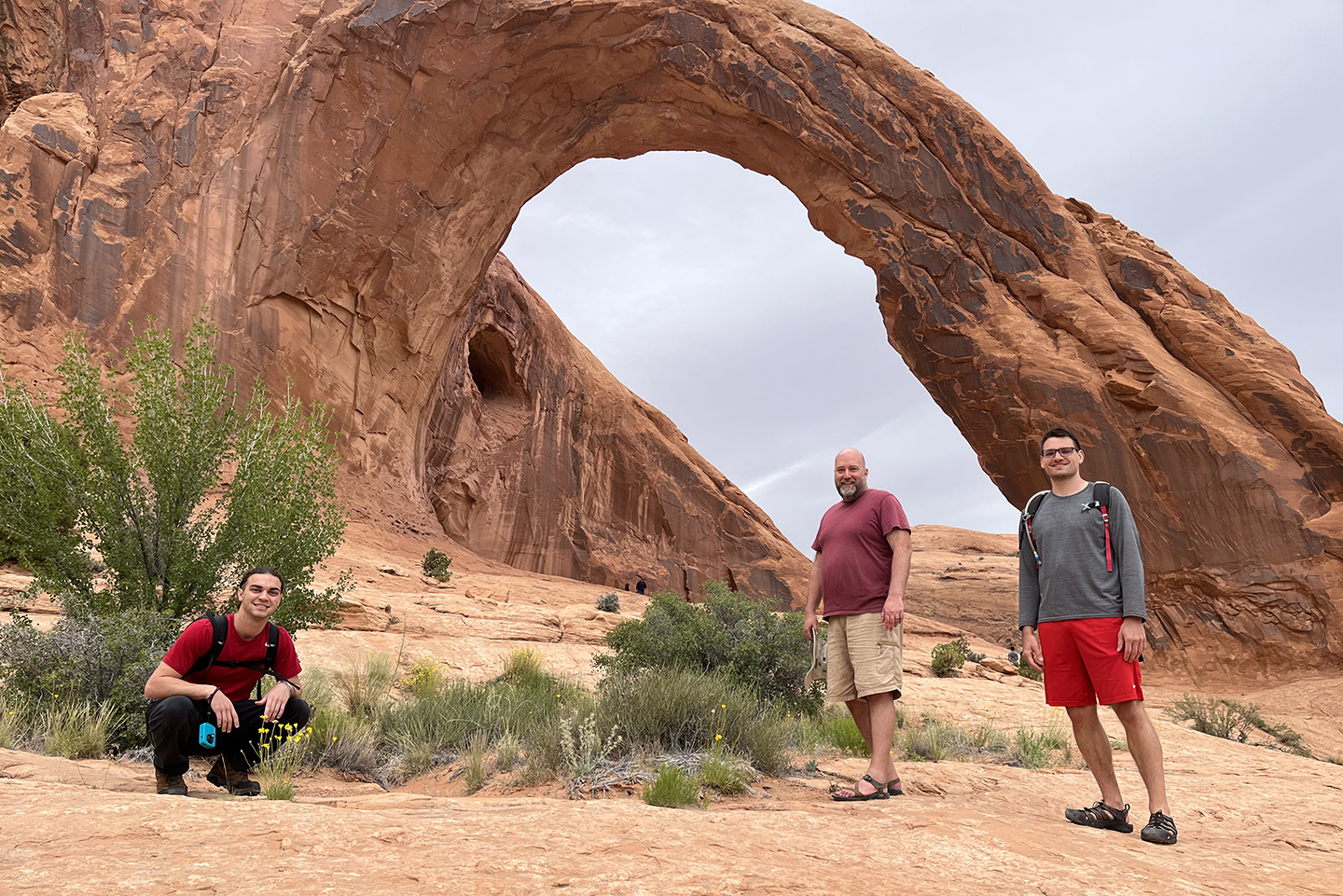
Jake Brasen’s research project took him 1,300 miles from campus. In June, Brasen, along with faculty mentor Dr. Jonathan Thayn, professor of Geography, and fellow undergraduate student Karl Rosch, spent two weeks in the high desert near Moab, Utah, tracking how well an introduced predator was killing off an invasive plant species.
Tamarisk, a small Mediterranean tree, had been planted in the U.S. in the 1800s as a tool to fight erosion along the Colorado River in Arizona. The thick, thorny plant has since spread to over one million acres across the Southwest, choking out native plants and the birds that live off of them, Thayn said.
“It grows very, very quickly, and it spreads quickly,” Thayn said. “When a limb falls off a tree for example, it falls into the river and can float down the river and stay viable for months. And then when it finally reaches shore, it will plant itself and start growing. So it very quickly is now the dominant vegetation on most rivers in the Southwest.”
About 15 years ago the National Park Service and federal Bureau of Land Management released a species of leaf beetle that only eats tamarisk. During their trip, the Illinois State researchers partnered with a retired United States Geological Survey entomologist to monitor the beetle’s effectiveness in beating back tamarisk along riverbanks near Arches and Canyonlands National Parks.
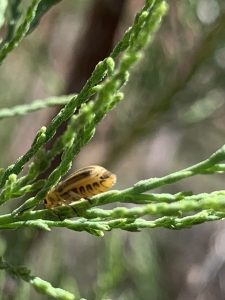
The group conducted field observations and took near-infrared images with a drone. They also rafted down the Green River and met with federal conservation officers who provided career advice to the students.
“I thought it was awesome and a great opportunity for me,” said Brasen, a senior from Lockport who is majoring in geography and minoring in environmental studies. “It was my first time really starting to work in environmental geography.”
Since the trip, the team has been organizing and analyzing the collected data. Thayn said the beetle is definitely making progress against tamarisk, but will never completely eradicate the invasive species.
“We’re confident that we’re going to get between 70 and 80% dieback, which turns into prime vegetative real estate in the desert being available now for new species, hopefully native species.”
Brasen said the research project has had a huge impact on him.
“The trip was a whole new experience for me,” Brasen said. “I got to see if I actually want to work in the environment and do environmental geography, and now I know I do.”
Brasen plans to present his findings at the University Research Symposium and a national geography conference, which will boost his resume and give him an opportunity to improve his public speaking. The team would also like to write a journal article about their findings.
Wyatt Frere and Rudy Morr
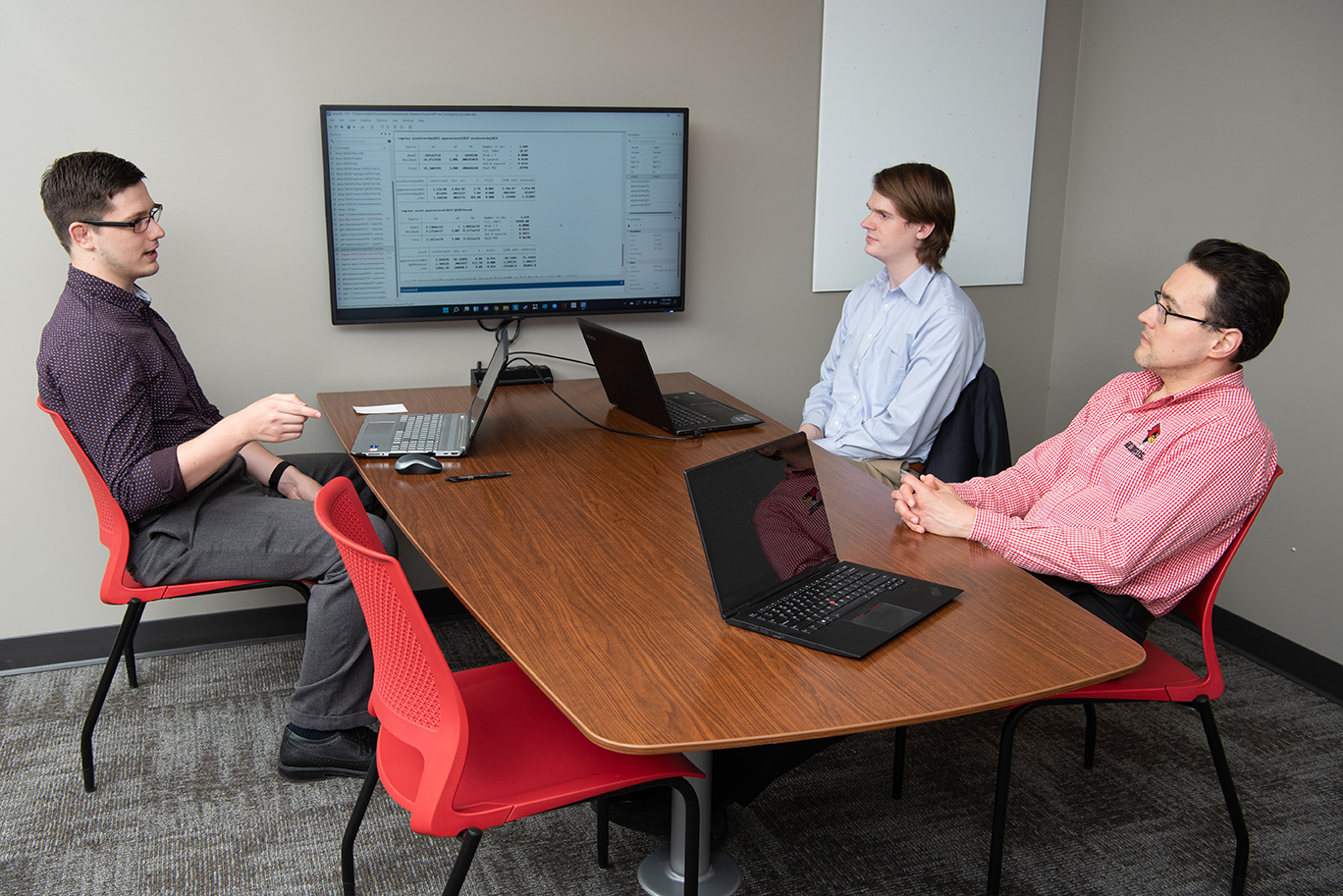
In a way, Wyatt Frere and Rudy Morr‘s summer research project began last fall when the students participated in the FDIC Academic Challenge. For that team competition, they wrote a research paper about how the Paycheck Protection Program affected the banking industry and local economies during the coronavirus (COVID-19) pandemic.
“We had a lot of stuff that was unresolved because the challenge was on a time crunch, so we couldn’t explore a lot of the avenues that we wanted to,” said Frere, a senior from Girard who is majoring in economics and sociology. “And then Dr. (Vladimir) Kotomin brought the grant up as a potential avenue that we could explore some of those areas. So Rudy and I both were excited to be able to see what we could come up with.”
Frere and Morr spent the summer wading through an ocean of financial data from about 5,000 banks in the United States.
“We are looking at a few different things, such as participation in the program—that’s usually what we’re using as an independent variable—and how that affected banks’ interest expense and their interest income? How did that affect their deposits? Did they grow more deposits by participating in the program by getting customers? And the same deal with assets instead of deposits,” said Morr, a senior from Chillicothe who is majoring in finance and risk management/insurance and minoring in economics and math.
The most challenging part for the researchers has been working with the data.
“It’s been a nightmare,” Frere said. “It’s over 12 million loans. And we’re trying to process all of those individually instead of aggregating them by institution. We’ve been going through different kinds of software to try and get all that data merged into a workable format.”
The pair have begun running regressions on the data in order to start answering their research questions but expected the work to continue into the fall. Frere said Kotomin, an associate professor of Finance, has helped them avoid dead ends in their research. “He’s willing to let us make our own mistakes. But at the same time, he definitely helped push us in potentially the right direction.”
Searching for meaningful observations has been a learning experience, Morr said. “With any given data set, you can make as many regressions as you want, but they’re not all going to be useful. There’s been a ton of research into this. So we also have to balance looking at things that are interesting that people care about and not trying to do anything that anyone’s done before.”
This is Frere and Morr’s first real research experience outside the classroom, and the first College of Business project to receive one of these summer research grants.
“It means a lot for us to get that grant and makes the whole thing more important,” Frere said.
Frere and Morr said the grant helped financially support the research and provided an incentive to keep going while they worked at internships this summer.
“I’ve always really enjoyed doing research. So getting a chance to not only do that, but potentially getting it published in a journal would be really cool,” Frere said. “Also learning all these new skills is going to help down the road and any future career I end up in.”
Gracie Stevens
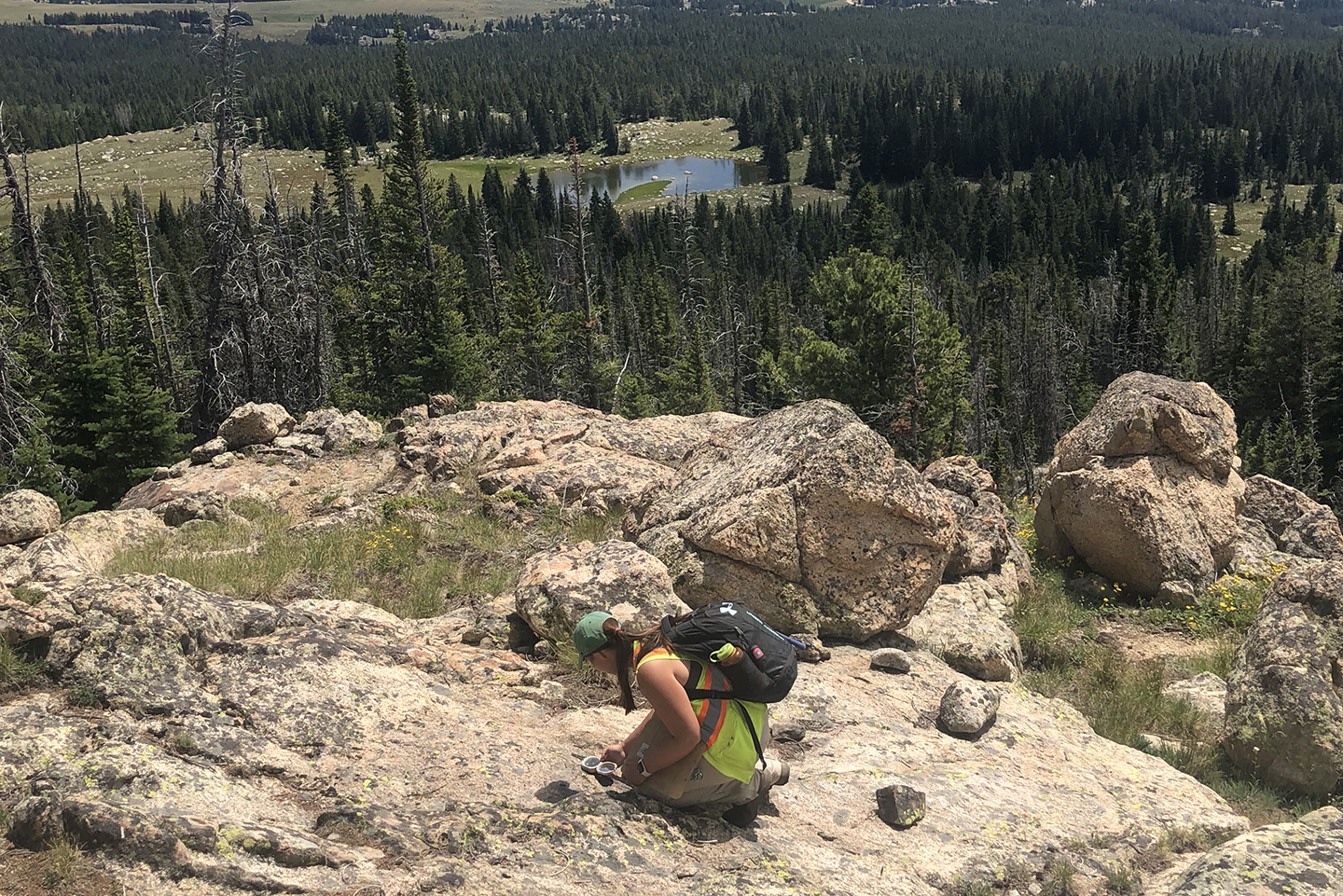
Gracie Stevens spent two weeks this summer examining some old rocks—really old rocks. Stevens was part of a team led by Dr. David Malone ’88, Distinguished Professor of Geology, that conducted research in north-central Wyoming.
Stevens was participating in the U.S. Geological Survey’s EDMAP program, which provides students with hands-on opportunities to produce geological maps and do field geology. Her team was tasked with creating a 7.5-minute quadrangle map covering about 40 square miles in the Bighorn Mountains.
Stevens and her peers prepared field maps for their fieldwork and then spent their days hiking around the target area collecting data and rocks. “We would look at the rocks to know what rocks were where, what they looked like, and what they were and see if there were any faults or structural features,” said Stevens, a senior geology major from Land O’ Lakes, Wisconsin.
At the end of each day, the researchers put their findings onto a large paper map. Some of the rocks they collected were pieces of granite that are potentially 2.8 billion years old, which would place them among the oldest rocks in the U.S.
The students are now doing the multistep process of dating those rocks by extracting the mineral zircon and sending that off to a laser lab in Arizona, which will allow for an analysis of uranium and lead decay. The team is also working to create a digital version of their map that will be sent to the Wyoming State Geological Survey.
“The research was just a really good experience,” said Stevens, “And it was so nice to have the (FIREbird) grant to support it.”
Stevens said the team plans to write a journal article about their granite findings and may present at next year’s Geological Society of America annual meeting.
Stevens is looking into attending graduate school to pursue her interest in volcanology. She explained why the type of research she did this summer is important.
“Now more than ever, people are starting to focus on our planet. And to really understand it, you got to spend some time just reconnecting with it and analyzing little bits and pieces of it.”
The deadline for academic-year FIREbird grants is September 16. For more information about student research funding opportunities, visit the Office of Student Research’s website.
